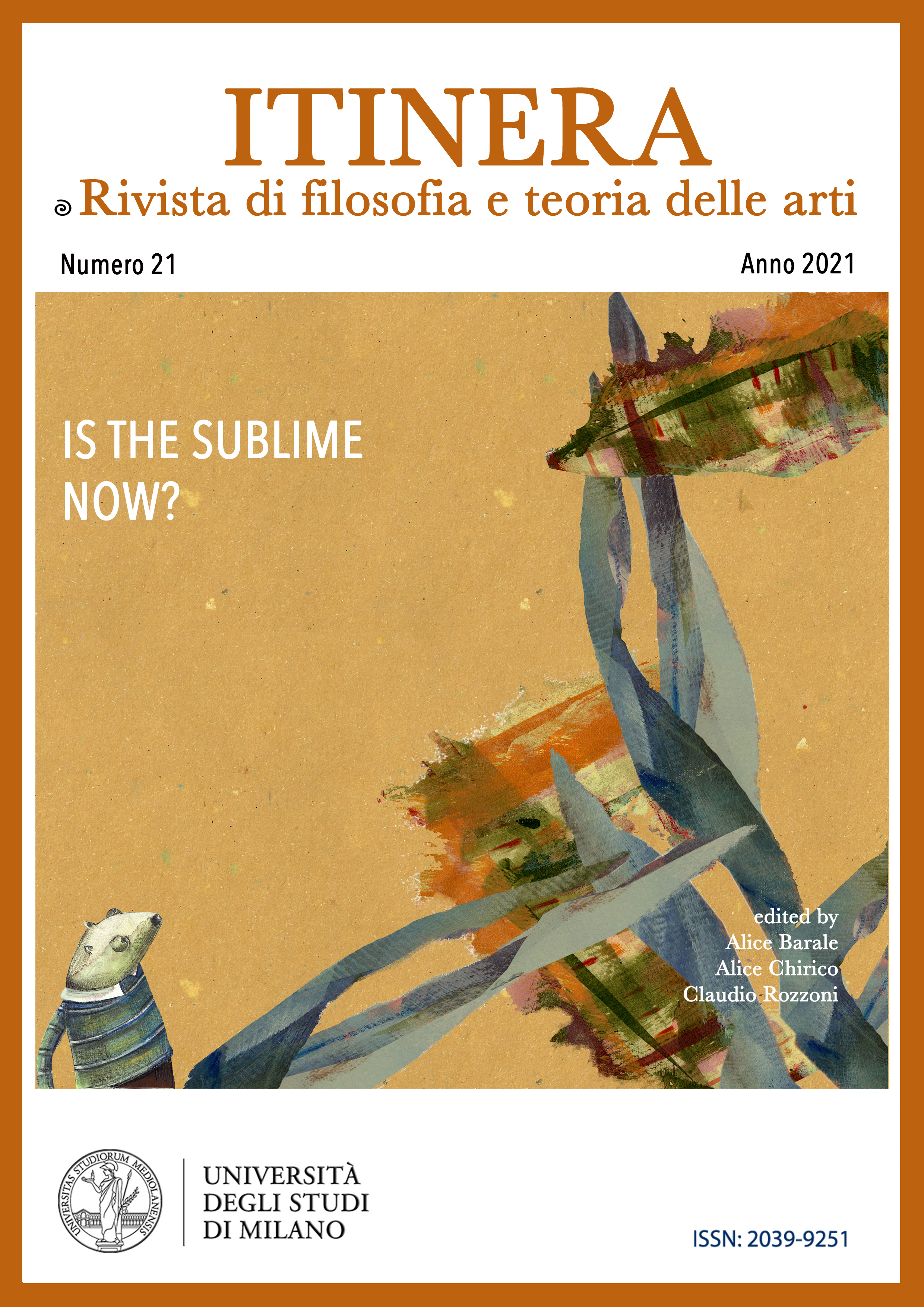The Sublime for the Living: A Dialogue
Keywords:
sublime, history of aesthetics, awe, empirical aestheticsAbstract
Following the tradition of the philosophical dialogue, we reimagine our real conversation where we come to understand our respective views on the sublime. We aim to do so in a way that respects both the sublime’s complex philosophical past and its emerging future in empirical research. As in a traditional dialogue, this contrivance is supposed to enact a philosophical exchange. The following conversation reveals the interlocutors’ diverging, converging, and shifting understanding of the sublime in a way that a verbatim interview transcript or a co-authored treatise could not. Moreover, its setting is indicative of the conversation’s current moment: the scene is the virtual Zoom room.
References
Boileau, N., in Robert R. Clewis, ed., The Sublime Reader, London: Bloomsbury, 2019, pp. 57-61.
Brady, E., The Sublime in Modern Philosophy: Aesthetics, Ethics, and Nature, Cambridge: Cambridge University Press, 2013.
Burke, E., in Robert R. Clewis, ed., The Sublime Reader, London: Bloomsbury, 2019, pp. 78-90.
Chirico, A., Robert R. Clewis, David B. Yaden, Andrea Gaggioli, “Nature versus Art as Elicitors of the Sublime: A Virtual Reality Study.” PLOS One 16 (3) 2021.
Clewis, R. R. “Imagination, Vital Forces, and Self-Consciousness in the Kantian Sublime,” Kant and the Feeling of Life, ed. Jennifer Mensch, Albany: SUNY Press, forthcoming.
Clewis, R. R. “The Majesty of Cognition: The Sublime in Baumgarten, Mendelssohn, and Kant,” Baumgarten’s Aesthetics, ed. Colin McQuillan, Lanham: Roman & Littlefield, 2021, pp. 241-272.
Clewis, R. R., ed., The Sublime Reader, London: Bloomsbury, 2019.
Clewis, R. R. “Towards a Theory of the Sublime and Aesthetic Awe,” in Robert R. Clewis, ed., The Sublime Reader, London: Bloomsbury, 2019, 340-354, pp.
Cuccuru, K., “That ‘Tremendous’ Mr Dennis: The Sublime, Common Sense, and Criticism” in Passions, Sympathy and Print Culture: Public Opinion and Emotional Authenticity in Eighteenth-Century Britain, ed. Heather Kerr, David Lemmings, and Robert Phiddian, Basingstoke: Palgrave Macmillan, 2016, pp. 105-121.
Cuccuru, K., “The Problem with the History of Aesthetics, Before Aesthetics,” unpublished manuscript.
Dennis, J., in Robert R. Clewis, ed., The Sublime Reader, London: Bloomsbury, 2019, pp. 62-68.
Doran, R., The Theory of the Sublime From Longinus to Kant. Cambridge: Cambridge University Press, 2015.
Giovannelli, A., Aesthetics: Key Thinkers, London: Continuum, 2012.
Glauser, R., “Aesthetic Experience in Shaftesbury,” The Aristotelian Society Supplementary Volume, 76 (2002), pp. 25-54.
Petrarca, F., “The Ascent of Mont Ventoux,” in Robert R. Clewis, ed., The Sublime Reader, London: Bloomsbury, 2019, 49-54.
Saul, J., Diaz-Leon, E., “Feminist Philosophy of Language.” The Stanford Encyclopedia of Philosophy (Fall 2018 Edition), Edward N. Zalta (ed.), URL = <https://plato.stanford.edu/archives/fall2018/entries/feminism-language/>.
Schopenhauer, A., in Robert R. Clewis, ed., The Sublime Reader, London: Bloomsbury, 2019, pp. 194-199.
Downloads
Published
Issue
Section
License
The authors who publish in Itinera are required to accept the following conditions:
1. The authors retain the rights on their paper and lincese the journal the right of first publication. The paper is also licensed under a Creative Commons License, which allows others to share it, by indicating intellectual authorship and its first publication in Itinera.
2. Authors may adhere to other non-exclusive license agreements for the distribution of the published version of the paper (ex. deposit it in an institutional archive or publish it in a monograph), provided that its first publication in Itinera is indicated.
3. Authors can disseminate their paper online (ex. in institutional repositories or on their website) before and during the submission process, since this can lead to productive exchanges and increase quotations of the published work (See “The Effect of Open Access”).





